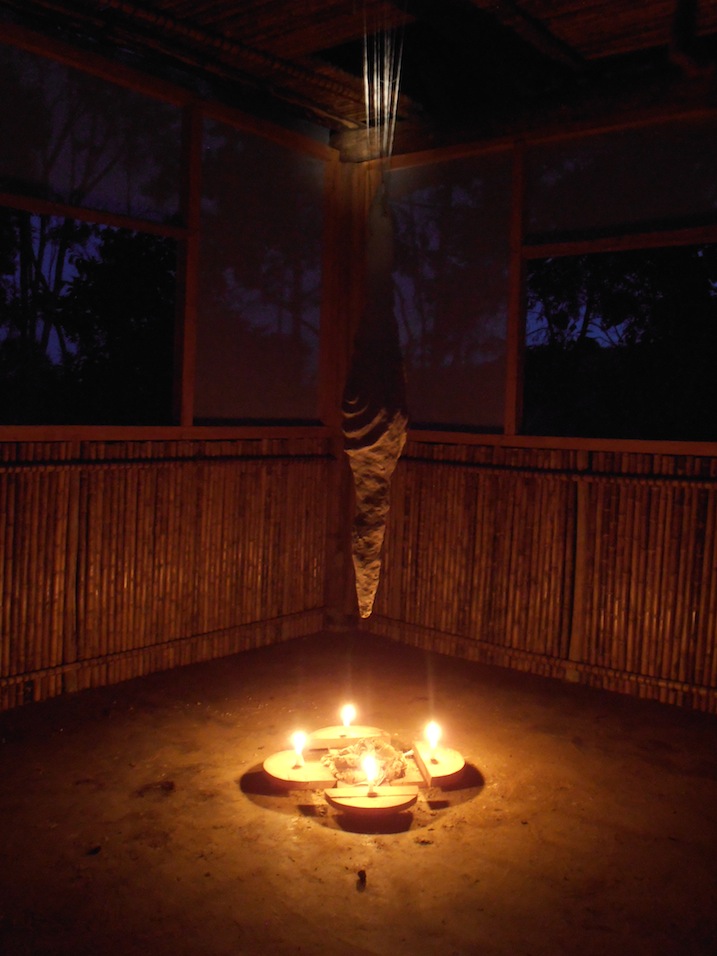It is not often you get called a degenerate, disgusting, unholy and unchristian all in one go but that is what happened to me a few weeks ago after I had given a talk about my art and its connection with my faith. Seems some people don't like difference of experience or opinion or have a sense of humour which were all important parts of my talk. But then you can't please everyone!
I certainly stopped trying along time ago. Identity or my search for one has fuelled and inspired all of my art. Later in life learning to write religious icons was a way to try and integrate my religion, faith and priesthood with my creativity and artistic calling. I felt as if I needed to bridge a gap or rather a huge chasm that was increasing in size after I had been ordained into the Church of England.
Art has always been my way of coping with and exploring the who, why, where and what questions that emerge throughout life. There have been times when my creativity has challenged other people as it indeed challenges me but to try and suppress the creative itch let alone try and exist without art has never been worth thinking about. I once showed the first icon I had painted to an area Bishop. His response was so sniffy so dismissive and negative I realised very quickly I needed to protect the creative spirit within. At the same time I also knew I mustn't shut this integral part of me off from the world. Personally I doubt if I would have been able to remain in the Church of England if it wasn't for art and creativity.
Take The Poisonous Purple Pinching Plant which was inspired by some purple robe wearers. Religion and status can easily be a smoke screen for ones own weaknesses and failures if not more blatantly their bigotry and hatred. Power does indeed corrupt.
But of course art too can also be a mode of propaganda. It is this which makes the path of an artist/priest sometimes a little treacherous.
I know of one priest who had himself commissioned in a Station of the Cross series of paintings as Joseph of Arimathea holding the body of Jesus and ultimately having himself portrayed in the most intimate of circumstances with the divine. I can only think this priest was hoping to express his closer and more elevated relationship to God than the mere mortals who sat in the pews every sunday.
I guess when you want to blow your own trumpet art has its benefits. Personally I would rather some kept their sounding off to the pulpit or maybe the privacy of their own homes. But on the other hand listening to drivel or looking at dross can also be a good training ground to discern what is worthy and what is not. My sounding off is definitely through art though. I have never been any good at preaching verbally but instead have found a voice (perhaps more a croak) through painting and making. I find inspiration in the story of Saint Francis of Assisi who proclaimed to his religious brothers to 'go out and share the gospel and use words if you have to!'
Less talking more 'being' were in part the inspiration for Te Waiata o te Piopio (Song of the Piopio). In this painting a figure emerges out of a dense forest and approaches the edge of a cliff. He waits, listening for the call of the Piopio a songbird from Aotearoa. Sadly he doesn't know that the Piopio has become extinct and the song he seeks has been silenced. But he continues to listen waiting to jump out either into the golden realm of the heavens or the swirling mass in the canyon below.
Is this a story of faith or perhaps a lack of it or even the loss of? Or maybe it is more to do with a willingness to listen to the song of something we can only dream about and hope for, and ultimately in faith take a leap out into the unknown to try and find? Ultimately it is about the need to be listened to which at times far outweighs the barrage of unasked for opinions or grandiose statements directed ones way. Our own inner voice can often be silenced by the incessant carping or inane chat of the multitude or those pushy individuals who have found a platform. You don't need to go far into the day to hear the barbs of condemnation and yet if you wake early you may be lucky enough to hear the sound of another dawn chorus. A sound far more natural and in tune with the world. This song soothes the soul. This song is eternal.






















